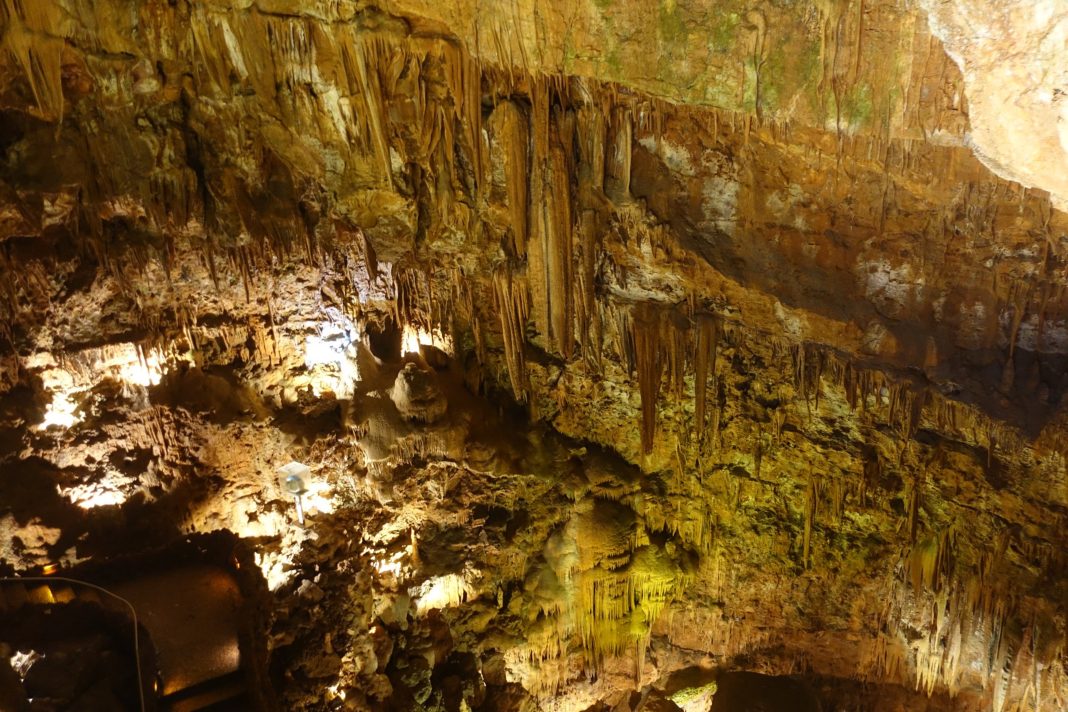Mira d’Aire, also known as Moinhos Velhos Cave, is one of the most important cave systems known in the Portuguese Estremadura Limestone Massif, with about 9 km in extension.
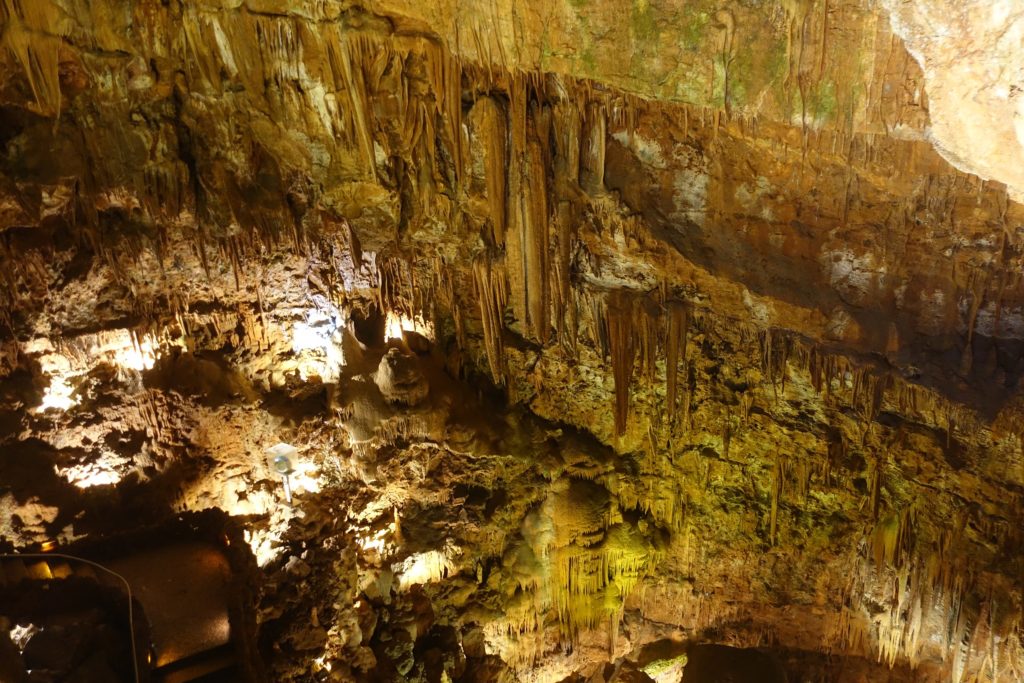
Mira d’Aire is characterized by the existence of two fossil paragenetic main conduits of about one decameter in diameter with dendritic tributaries, and a set of semi-active passages in a dendritic pattern at the north and angulates at the south. The fossil zone has a drop of 100 meters and the thickness of the intermediate zone varies from 80 meters upstream to 60 meters downstream. Water flows in syngeneic galleries, from the northern to the southern quadrant, towards Gruta da Pena spring.
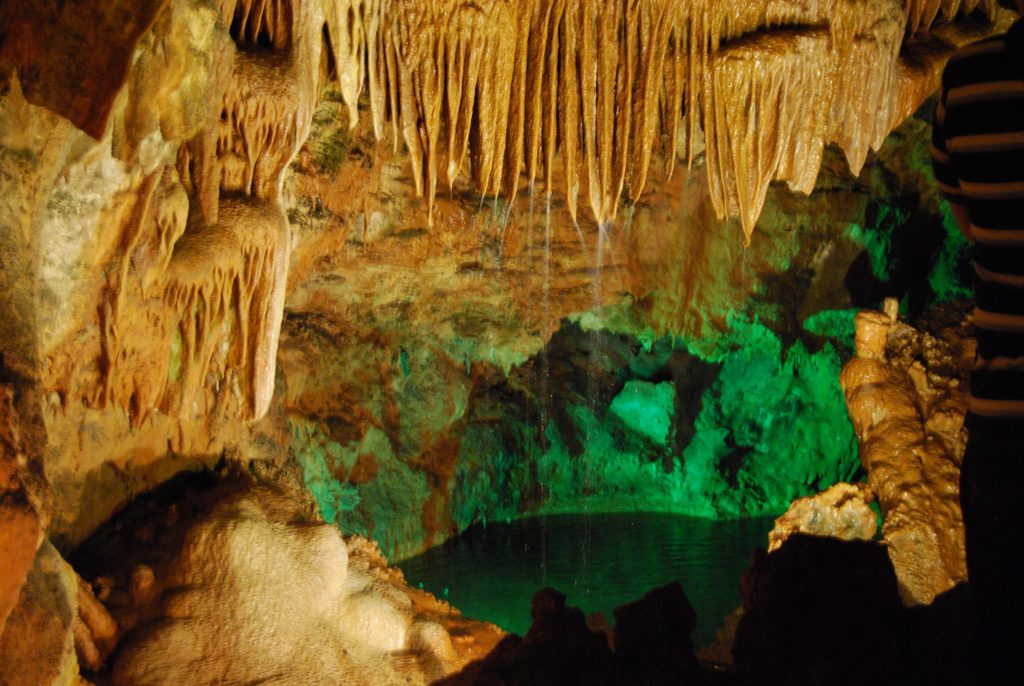
This underground fantasy world of spaghetti-like stalagmites, stalactites, opalescent rocks, and other bizarre rock formations was discovered completely by accident in the 1940s and subsequently opened as a first-class tourist attraction many years later.
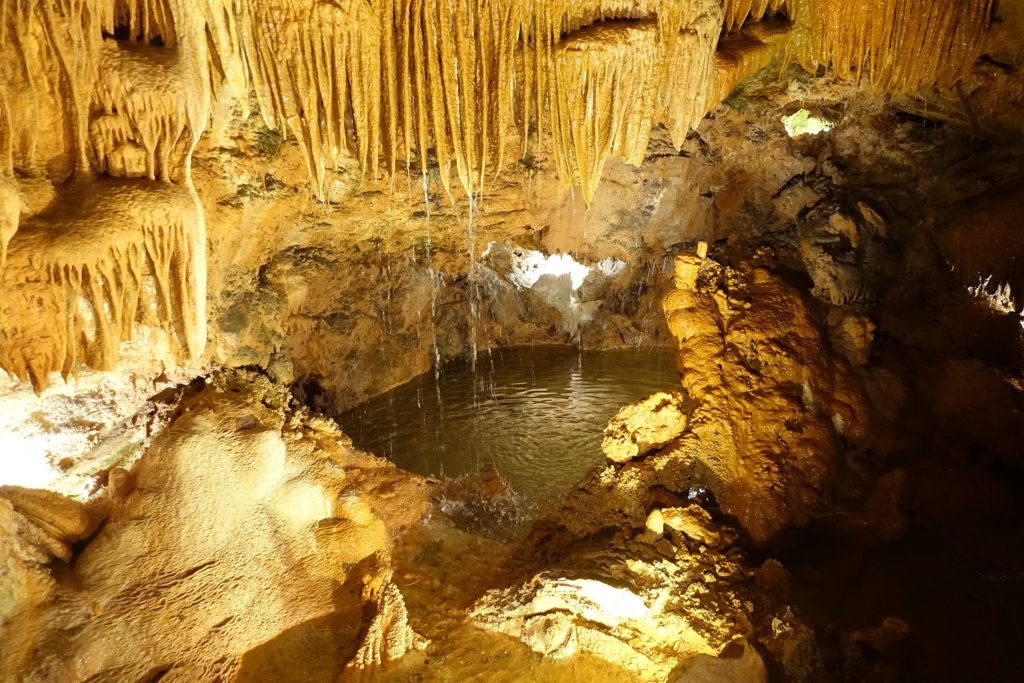
This cave is inhabited by several endemic trogobionts: the ground-beetle Trechus lunai, the cave spider Nesticus lusitanicus and by several stygobionts, being the isopod Proaellus lusitanicus the most abundant.
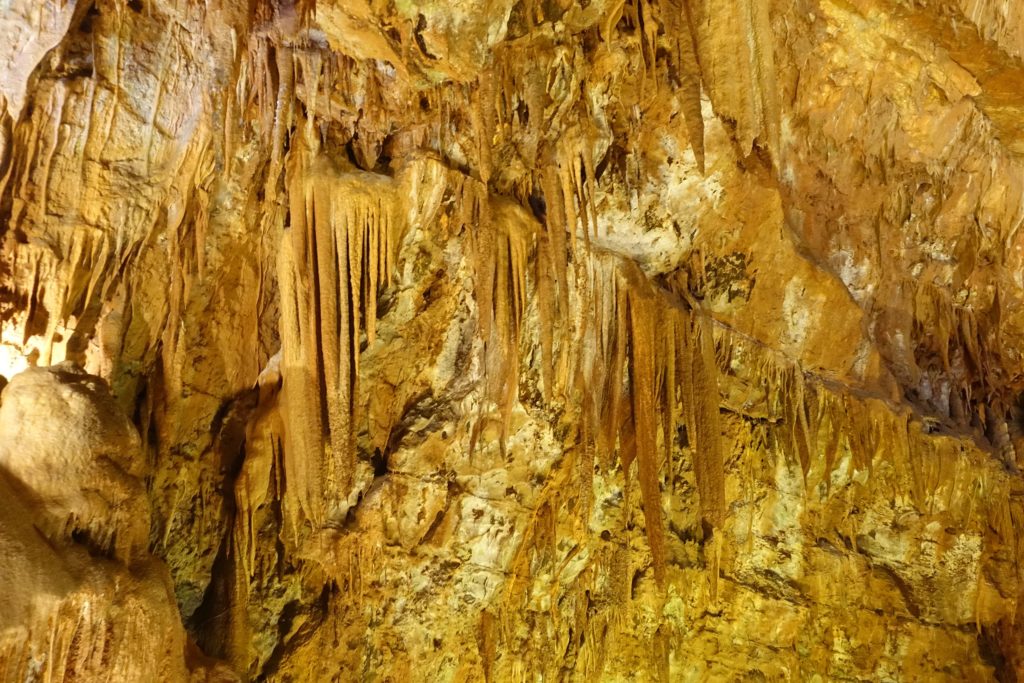
These specific caves keep a constant temperature of 17 degrees Celsius (year-round – no matter the outside weather or temperature). The caves are open year-round but the opening hours vary depending on the time of year and on public holidays.
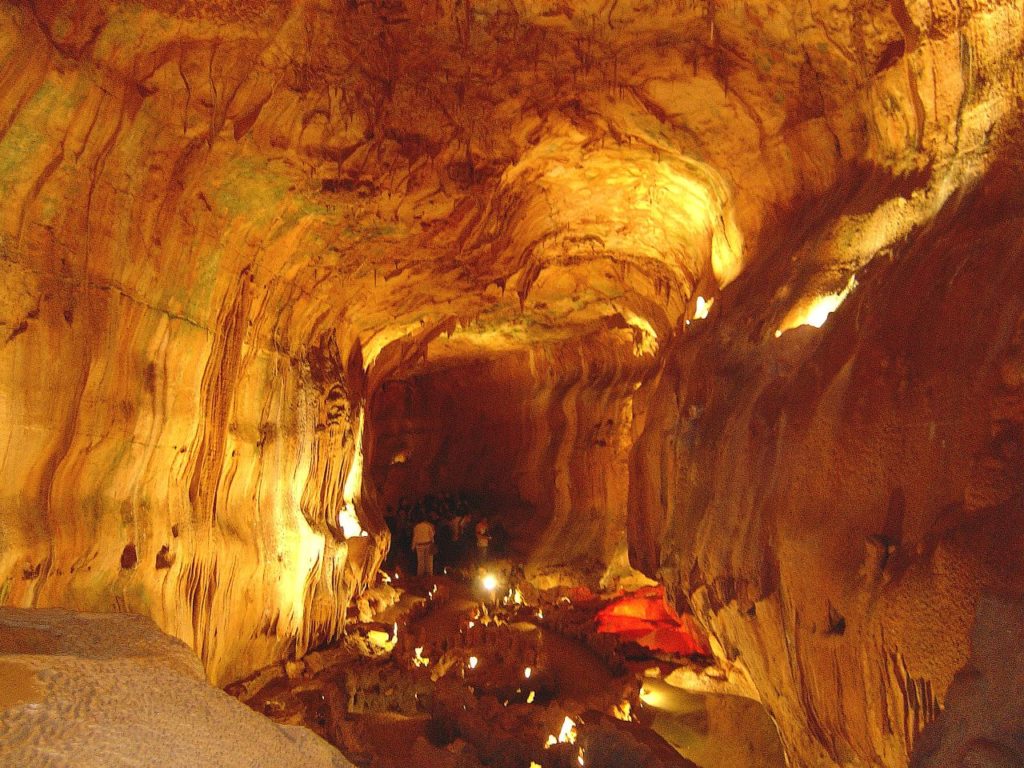
According to the Internet





